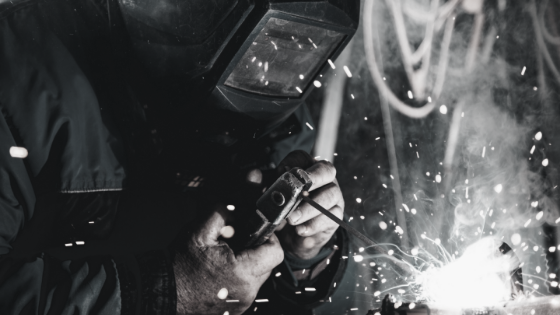Welding Fumes Enforcement Expectations
As a result of the HSE Change in Enforcement Expectations for Welding Fumes released in February 2019, there has accordingly been a revision of the COSHH advice to ensure that any welding fume released is adequately controlled.
Hazards
There is increased evidence that welding fumes can cause cancers as well as other Chronic Obstructive Pulmonary Disorders (COPD). It can increase susceptibility to pneumonia and occupational asthma. Welding fumes may also cause adverse neurological effects resultant from exposure to manganese in mild steels. The findings of the International Agency for Research on Cancer concluded that there is no safe level of exposure to welding fumes. This was irrespective of the duration or location of the work. There is, therefore, an essential requirement for the provision of suitable protective equipment. This can be done by means of engineering controls such as Local Exhaust Ventilation (LEV) machinery. In the event that an LEV alone is insufficient to control exposure, it must be supplemented by RPE.
What Do Employers Need to do?
The conclusion is that general area ventilation is insufficient when undertaking any form of welding. You will therefore be required to demonstrate that workplace air quality is controlled and safe. An exposure measurement survey including air sampling will ensure your LEV systems are fit for purpose. It will also ensure that your working environment and practices are safe and appropriate.
Local Exhaust Ventilation (LEV) Testing
COSHH regulations oblige companies to have their LEV systems thoroughly checked at least every 14 months. An LEV Test will highlight defects and list items that need to be maintained.
Respiratory Protective Equipment (RPE)
Should the LEV test find that a Local Exhaust Ventilation System on its own is insufficient to protect your employees, Respiratory Protective Equipment (RPE) will be required. All RPE should be CE marked and have an Assigned Protection Factor (APF) of at least 40 – including cylinder breathing apparatus if oxygen levels could be depleted. All RPE should be subject to its own maintenance programme to ensure that it remains effective and compliant. This will demonstrate that you are fully versed in the use of RPE. It also shows that you are able to train your employees on how to stay safe when operating welding equipment.
Is Your Business Compliant?
HSE inspectors will be visiting businesses across the country to check compliance with the law. As an employer, you need to understand the risks, plan your work environment accordingly and use appropriate equipment and systems when welding. At Workplace Exposure we are passionate about ensuring our clients are fully in line with the most up to date legislation. We can provide full, up-to-date access to the relevant information and testing that will keep your workplace safe and fully compliant at all times.
We’re here to help
At Workplace Exposure, our expert team have experience working with a variety of different businesses to ensure they offer a safe, compliant working environment. Our professional solutions and advice help to ensure your business meets compliance standards and is operating to best practice. If you need help in carrying out air monitoring we’re here to help.
Get in Touch!
Get in touch with Workplace Exposure. Either give us a call on 0800 689 4386, or fill in our enquiry form to discuss your monitoring or consultancy requirements.
We’ll then provide you with a no-obligation proposal. We can often give an initial idea of fees whilst we discuss your particular needs.
Once you’ve accepted our proposal we can then schedule the work.
Following our site visit, we’ll provide you with a comprehensive report giving you advice, recommendations and control measures where appropriate.
Implement the outcomes for a compliant, happy and healthy workplace.
